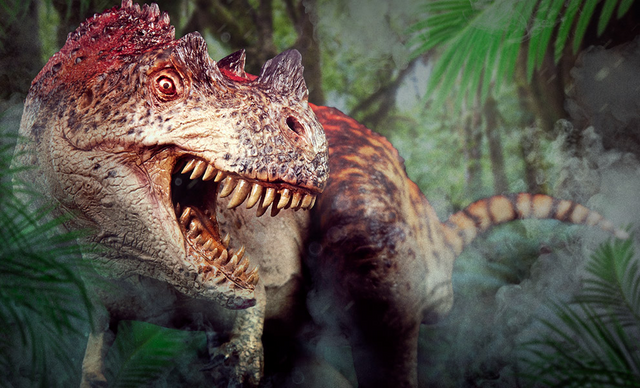Ceratosaurus

Ceratosaurus was a carnivore (meat-eater) that lived in North America, Africa, and possibly Portugal, during the late Jurassic period, about 156 to 145 million years ago.
Ceratosaurus was about 15 to 20 feet (4.5 to 6 meters) long and may have weighed up to 1 ton.
Ceratosaurus can be recognized by the short horn on its snout, its massive tail, and its four-fingered hands (a primitive configuration). Ceratosaurus was first discovered by Othniel C. Marsh who choose the name which means "horned lizard", referring to the horn on the animal's nose. Marsh speculated that Ceratosaurus was a good swimmer because of its crocodile-like tail.

The earliest examples of Ceratosaurus were found in Cleveland Lloyd Dinosaur Quarry in Utah and Dry Mesa Quarry in Colorado. At least four, and perhaps as many as six, distinct species Ceratosaurus are now known from the fossil discoveries to date.
There is still many issues to research and debate about Ceratosaurus, not least of which is how exactly to classify it. One of the mysteries about the creature is that it has a mix of advanced and primitive characteristics, and it is not entirely clear which other dinosaurs it is related to.